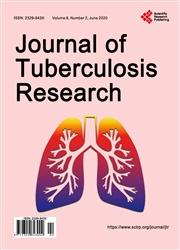Effect of Nutritional Support on Treatment of Multi-Drug Resistant Tuberculosis in Rajshahi Division, Bangladesh
引用次数: 1
Abstract
Introduction: Multi-drug resistant tuberculosis (MDR-TB) is a public health crisis throughout the world including Bangladesh particularly due to its complexities in diagnosis, longer treatment regimen, and adverse drug reaction. Nutritional supplementation has significant impact on patient’s weigh gain and optimum weight gain is a biomarker of treatment response. The objective of this study was to measure body mass index (BMI) progress among MDR-TB patients in different phases of treatment. Methodology: A prospective observational study was conducted from March 2010 to July 2015 in Chest Disease Hospital (CDH), Rajshahi and different communities of Rajshahi Division, Bangladesh. A total of 233 confirmed MDR-TB patients were selected from CDH who received treatment and nutritional support from ongoing national TB control program (NTP). They received free diagnosis, follow up tests, treatment and nutritional support as regular diet as well as cash amount Bangladeshi taka (BDT.) 1000 per month in CDH. Along with treatment, they also received only cash amount BDT. 1500 per month as nutritional support at community level. Weight measurement was taken at regular interval from enrollment to completion of treatment. Chi-square, paired t-test and linear regression analysis were used in this study. Results: The baseline prevalence of undernourished (BMI 2) was 82.4%. After two months of treatment, 14.5% underweight patients gained weight and reverted to normal BMI. Regression analysis showed the decreasing tendency of BMI progress with increasing age which was significant among male patients (p 92%). Conclusion: Nutritional support has synergistic effect on treatment response. Adequate nutritional support with proper treatment would help to get better outcomes particularly at community level. Gender issue should also be addressed at household level.营养支持对孟加拉国Rajshahi地区耐多药结核病的治疗效果
导论:耐多药结核病(MDR-TB)是全世界包括孟加拉国在内的公共卫生危机,特别是由于其诊断复杂性、较长的治疗方案和药物不良反应。营养补充对患者体重增加有显著影响,最佳体重增加是治疗反应的生物标志物。本研究的目的是测量耐多药结核病患者在不同治疗阶段的身体质量指数(BMI)进展。方法:2010年3月至2015年7月在孟加拉国拉杰沙希胸病医院(CDH)和拉杰沙希区不同社区进行前瞻性观察研究。从CDH中选择了233名确诊的耐多药结核病患者,他们接受了正在进行的国家结核病控制规划(NTP)的治疗和营养支持。他们得到免费的诊断、后续检查、治疗和营养支持,如正常饮食,并在刚果民主共和国每月获得1000塔卡现金。在治疗的同时,他们也只收到现金的BDT。每月1500美元作为社区一级的营养支助。从入组到治疗结束,每隔一段时间测量一次体重。本研究采用卡方检验、配对t检验和线性回归分析。结果:基线营养不良患病率(BMI 2)为82.4%。治疗两个月后,14.5%体重过轻的患者体重增加,体重指数恢复正常。回归分析显示,随着年龄的增长,BMI进展呈下降趋势,其中男性患者明显下降(p = 92%)。结论:营养支持对治疗效果有协同作用。适当的营养支持和适当的治疗将有助于取得更好的结果,特别是在社区一级。性别问题也应在家庭一级加以处理。
本文章由计算机程序翻译,如有差异,请以英文原文为准。
求助全文
约1分钟内获得全文
求助全文

 求助内容:
求助内容: 应助结果提醒方式:
应助结果提醒方式:


